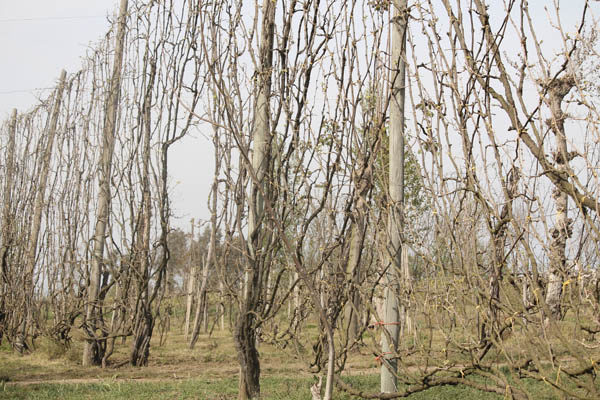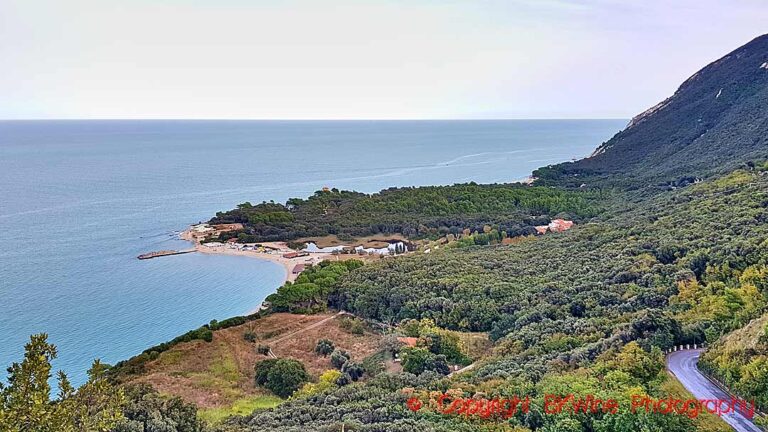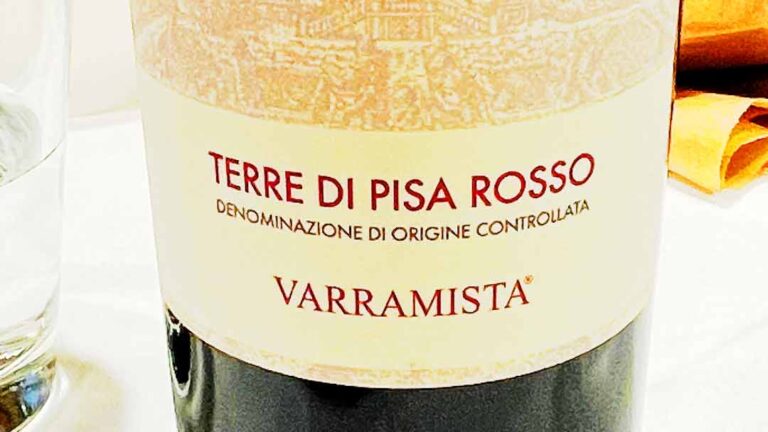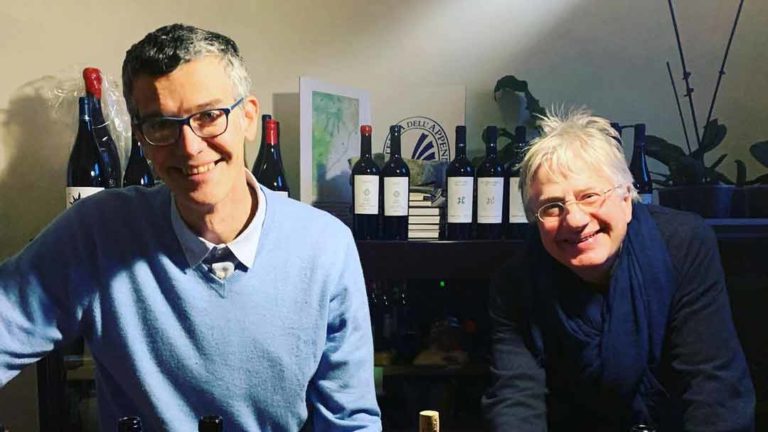“Be careful, you can burn yourself,” says Gerardo Vernazzaro. I stand on a crater overlooking the sea. From the ground, sulfur smoke rises into the air. The name Campi Flegrei means just burning fields. But I did not think the name was literally true.
I quickly move out on the road where a scooter swipes past. In Campi Flegrei, the vineyards are not only on volcanoes but also in residential areas. Instead of birds or insects, you hear ambulances and feel the smell from someone’s kitchen. As modern heroes, some twenty producers fight for keeping their vineyards in an area where house construction exploded, with or without permission, in the sixties. The area is today one of Italy’s most densely populated.
The area’s 90 craters have all had an outbreak sometime in the past 37,000 years. What is beneath the soil is without exaggerating a ticking bomb. There are also five volcanic lakes. The altitude is between 500-1000 feet (150-300 meters) above sea level. The little lake Astroni that differs only from the sea by a thin wall of land means “without life”. All the fish in the water died because of the sulfur. The poet Virgilio thought it was here that you could find the opening to paradise. Myth mixed with everyday life. Now and then. Houses from the sixties with flowering fields. Water and fire. All in one place.
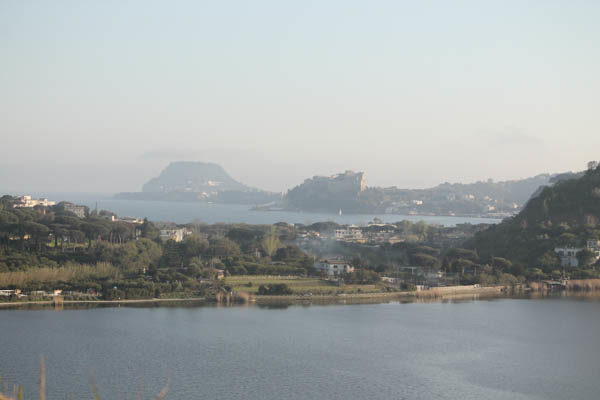
-Now, you can easily understand our wines, says Gerardo Vernazzaro, pointing at the sulfur smoke rising from the ground. Together with his wife Emanuela he runs the winery Cantine Astroni. The name of the farm comes from the youngest of the area’s craters. In total, Campo Flegrei is 130 hectares with only twenty-three producers making one million bottles a year.
-I studied winemaking in Udine and when I returned home, I was skeptical. Everything seemed so complicated. Slowly I gathered knowledge and today I am positive. I want our wines to reflect our special terroir, he continues.
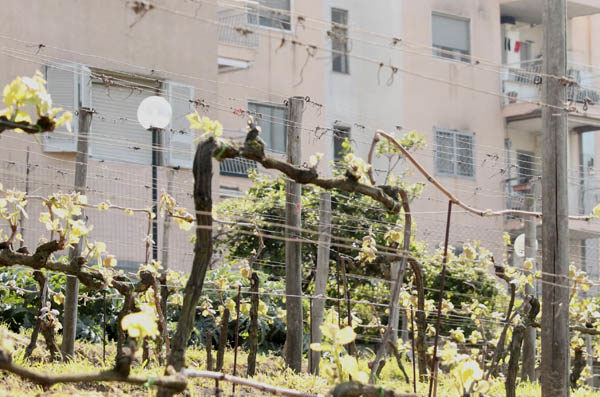
The grape varieties of the area
The two grape varities in Campi Flegrei are the white falanghina and the black piedirosso. The soil consists of layers from three different geological epochs. The first is compact volcanic rock that was created 40,000 years ago. Ten thousand years later, the second layer that is gray hard rock was created, in dialect it is called piperno. The top layer is porous yellow volcanic sand. Almost all of the vineyards in the area are pied franc, in other words they have not grafted the Vitis vinifiera on an American rootstock. Something that is possible since the Phylloxera never got here because of the sand and the pH value in the volcanic soil.
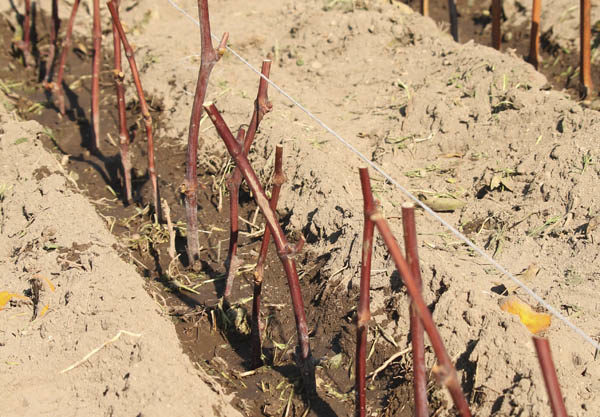
-Here, the vines need about eight years before you can be sure that the roots are able to provide the plants with water. Compared to two, three years in most other places, says Vincenzo de Meo from the vineyard Sibilla.
He has just found Roman remains when he wanted to expand his wine cellar. Like most of the vineyards we visit in the area, peas, tomatoes and potatoes grow between the rows of vines. They seem to grow by themselves.
The wines from the area amaze. I have to admit I did not have high expectations – but they are good. Both piedirosso and falanghina taste quite different from those from other parts of the region, like Irpinia or Benevento. Many producers tend to specify that this falanghina is another biotype, so it might be, but what you feel in the glass is the soil. Flint, rock, sulfur, resin instead of fruit in the white. The spicy and dark tones of chocolate in the red make one think of oak barrels, but instead most of the wineries use only steel.
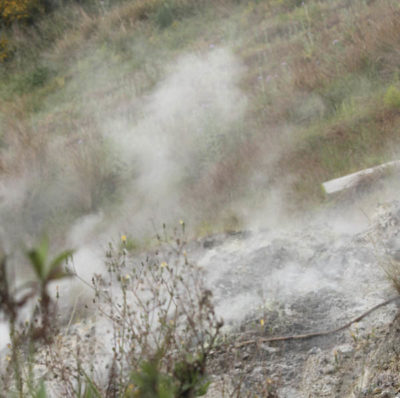
I think Campi Flegrei could become an area for garage wines. Small production. High quality. A story to tell. Last but not least, it is really good wines that are currently sold at extremely low prices in view of the work required. Everything is done by hand with the help of one or other donkey on the steep slopes.
The wineries and the wines
Sibilla
Twenty four acres (nine and a half hectares). 70,000 bottles. Three kilometers from the sea. Vineyards with piedirosso that are 85 years old. 1998 came the first bottle under own label.
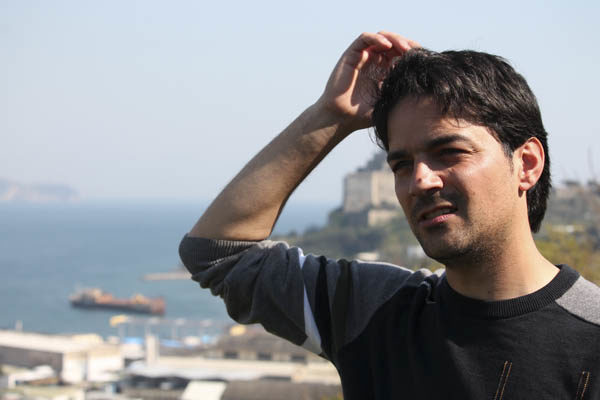
Falanghina Campi Flegrei 2016 Sibilla
Simple but good wine. Citrus, pear, slightly salty, medium body and medium finish.
Cruna deLago 2014 Sibilla
100% falanghina. Sixty-year-old vines, three months on the lees. Here the smoky, flinty tones emerge along with herbs, thyme, good texture and acidity. Very good.
Domus Giuli Sibilla 2010
100% falanghina. Five-month skin maceration, four years in the bottle. Honey, ripe apples, mint, resin. Surprisingly light considering the skin maceration. The wine does not have the bitter, oxidized tones that the skin maceration brings in many wines of the same type.
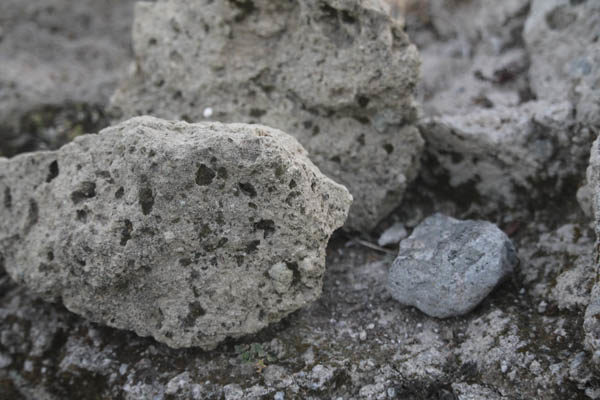
Piedirosso 2013 Vigna Madre Sibilla
Vineyards that are 85 years old. Juniper berries, dark berries and peppery tones, low tannins, good acidity, medium plus finish, very nice. Extremely food-friendly wine.
Agnanum
Father and son run the winery, 25 acres (10.5 hectares) of terraced vineyards where no work is mechanized. Three times a year, the terraces must be renovated due to erosion. The vines are over a hundred years old.
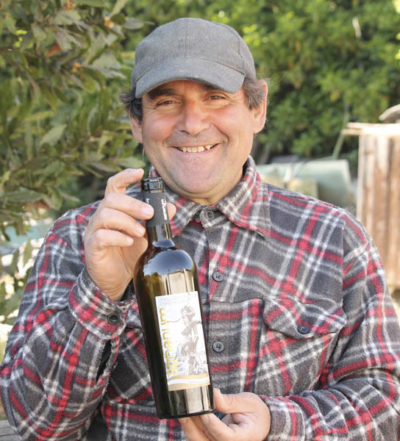
Sabbia vulcanica bianca Agnanum 2016
Grape varieties: falanghina, biancolella, caprettone, gelsomina, moscato bianco.
Jasmine, sweet fragrance, medium plus body, medium acidity, wide, fat, long finish. Warm.
Falanghina Campi Flegrei DOC Agnanum 2008
100% falanghina. Golden yellow, dried fruit, pineapple, flint, warm, low acidity, ripe peach flavor, yellow ripe apples. Smooth. Medium finish.
Falanghina Campi Flegrei DOC Agnanum 2003
100% falanghina. Fourteen years and you can’t feel the age. Surprisingly nice ageing of the wine. Candied fruit, yellow flowers, Mediterranean herbs, orange flowers, full-bodied, ripe taste, but with a bitter-almond flavor towards the end. Still fresh acidity. Very nice.
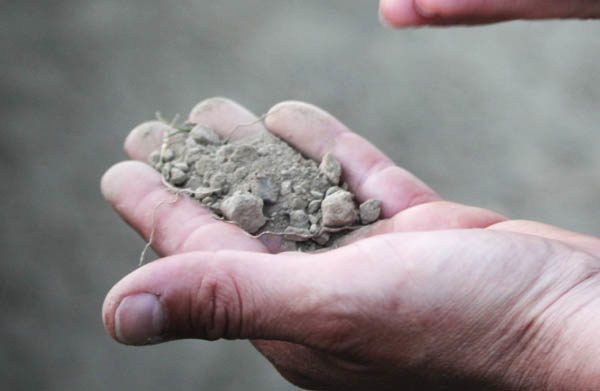
Salandra
18,000 bottles. The vineyard is full of hives since they also make honey. Organic farm with biodynamic elements in the process.
Falanghina Salandra 2009
Good body, ripe oranges, citrus, medium plus acidity, complex finish with a mixture of citrus, honey and almond. Very good.
Pro Polis Salandra 2011
Piedirosso. Very tight, vertical, high acidity, medium tannins, delicate fruit, red berries and spices. A good piedirosso!
Cantine Astroni
Owner Gerardo Vernazzaro who is today president of the area’s consortium. A driven, positive man who, with his wonderful wife Emanuela, allowed us to taste some of the area’s absolute best wines.
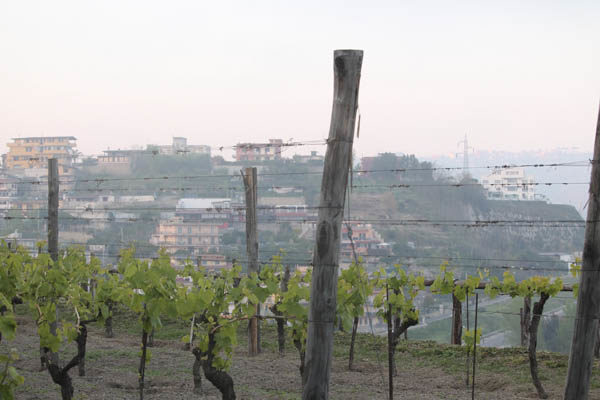
Astroni Colle Imparatrice 2015
100% falanghina. Warm with light sweetness, salty, lemon, cedar, fresh, medium body, long finish.
Astroni Colle Imparatrice 2014
100% falanghina. More flint and saltiness, citrus, thyme, rosemary, medium body, more vertical than 2015. Very nice.
Astroni Colle Imparatrice 2011
100% falanghina. Ripe yellow fruits, the flint always there, peppery, high acidity, medium plus finish. Very good.
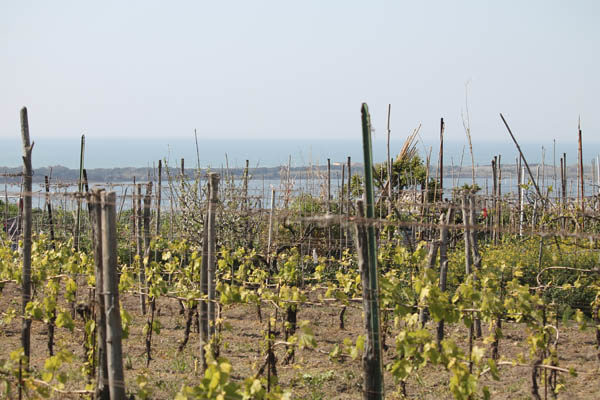
Vigna Astroni 2014
100% falanghina. Single vineyard. The wine stays six to eight months on the lees and then eight months in a bottle.
Herbs, thyme, resin, salt, lemon, long finish, vertical, but at the same time filling the mouth. You want to take another sip right after you swallow. A favorite!
Vigna Astroni 2015
100% falanghina. More vertical, higher acidity, bone dry. Like drinking mountain water, lemon, thyme, Mediterranean herbs, elegant finish. Very good.
Salvatore Martusciello
Salvator’s family started Grotta del Sole, one of Campania’s largest producers, the first to re-believe in local varities in Campi Flegrei. The winery closed a couple of years ago. Today, Salvatore has started anew with his own winery with his wife Gilda. Today they make 60,000 bottles.
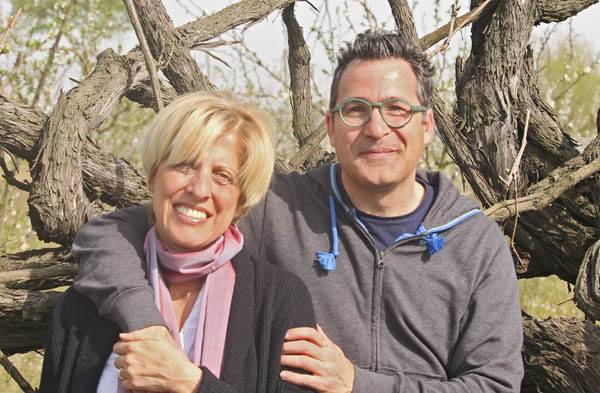
Settevulcani, Campi Flegrei DOC Salvatore Martusciello
Falanghina. Flint, citrus, pear, high acidity, dry and light but round finish with taste of almond. Good!
Ottouve Gragnano Salvatore Martusciello
A red sparkling wine that you traditionally drank when you had a pizza. Today, few people make the wine. I called it Naples’s answer to Lambrusco, they laughed but probably did not really agree. In the past, eight different grape varieties were used, hence the name ottouve.
The mousse is obtained in tank with the Martinotti (charmat) method. The grapes are sciascinoso, aglianico and piedirosso
Good acidity, a lot of fruit, raspberries, forest berries, currants but without going towards the sweet side. Intensive mousse. The wine is served cool and is dry with nice fruit that goes through. Different and fun.
Trentapioli, Asprinio di Aversa DOC Brut Salvatore Martusciello
It is a sparkling wine made with grapes growing on 35 to 50 feet (ten to fifteen meters) high vines. The vines look like spider webs. It is the Etruscan trellising method that is used. Here you do not calculate the yields in hectoliters but per square feet!
Asprinio has an extremely high acidity so most of the times the producers make sparkling wines with it.
Cedar, lemon, pear, high acidity, medium finish. A wine to drink with fatter fish dishes. It surely cleans your palate.
Åsa Johansson is BKWine’s person in Italy. She lives in Florence since the early ’00s. Asa writes regularly on wine and food in Swedish and Italian publications as well as online.
[box type=”info” style=”rounded” border=”full”]
The very best place to experience the Italian wines is of course in Italy, and also the great Italian food! Come on a wine tour to Italy with BKWine and you will get plenty.
Travel to the world’s wine regions with the wine experts and the wine tour specialist.
Wine tours with the best food and wine. BKWine wine tours.[/box]
